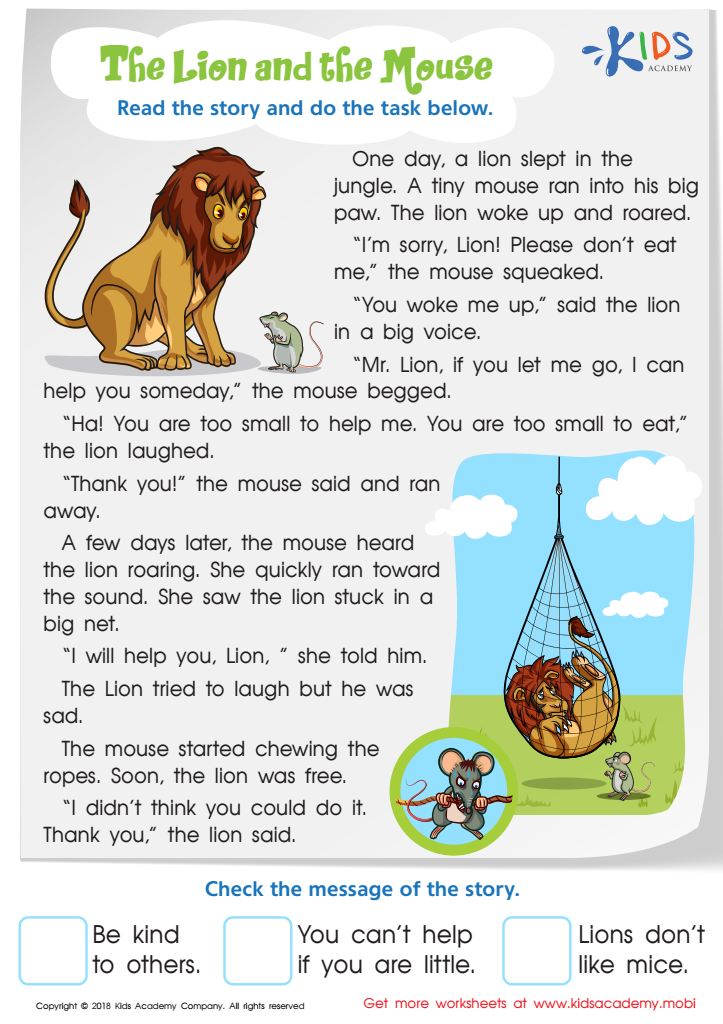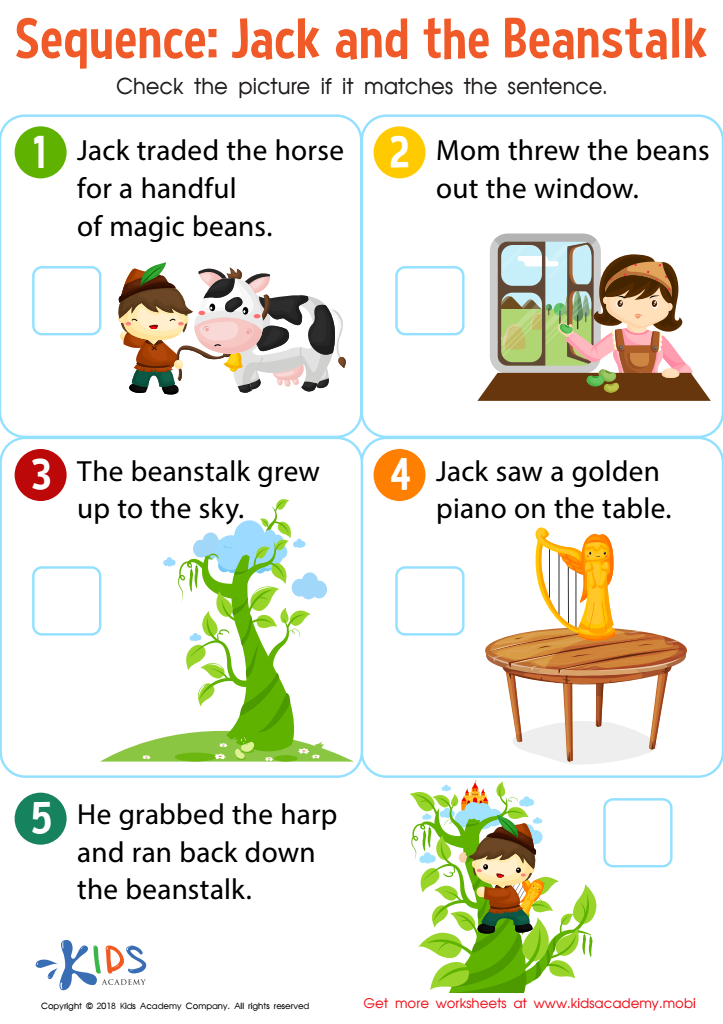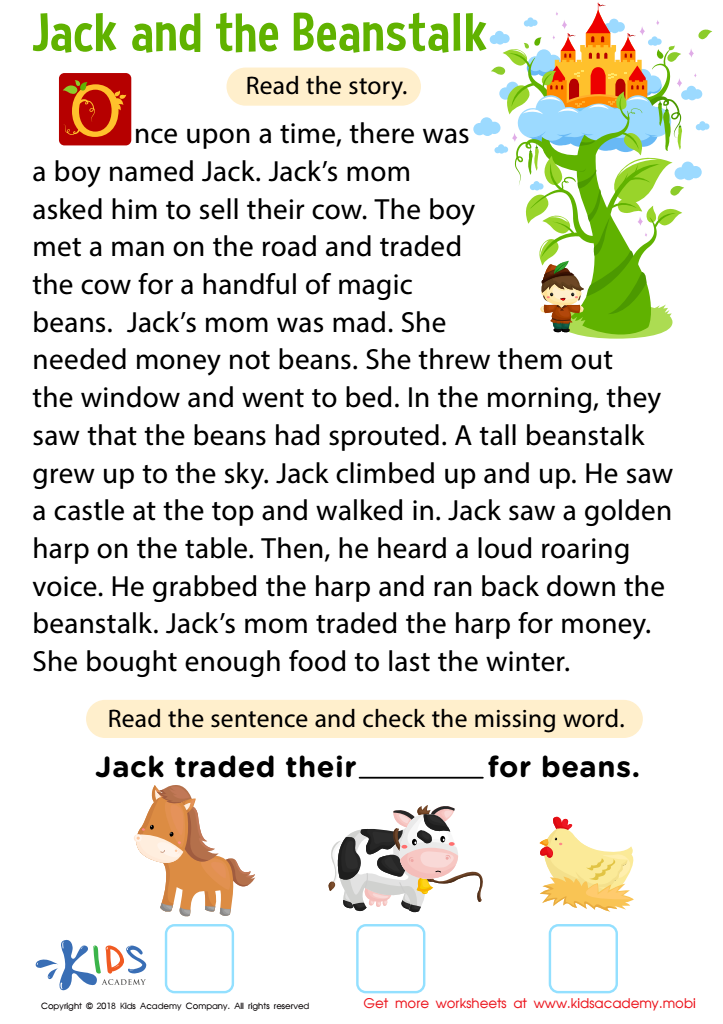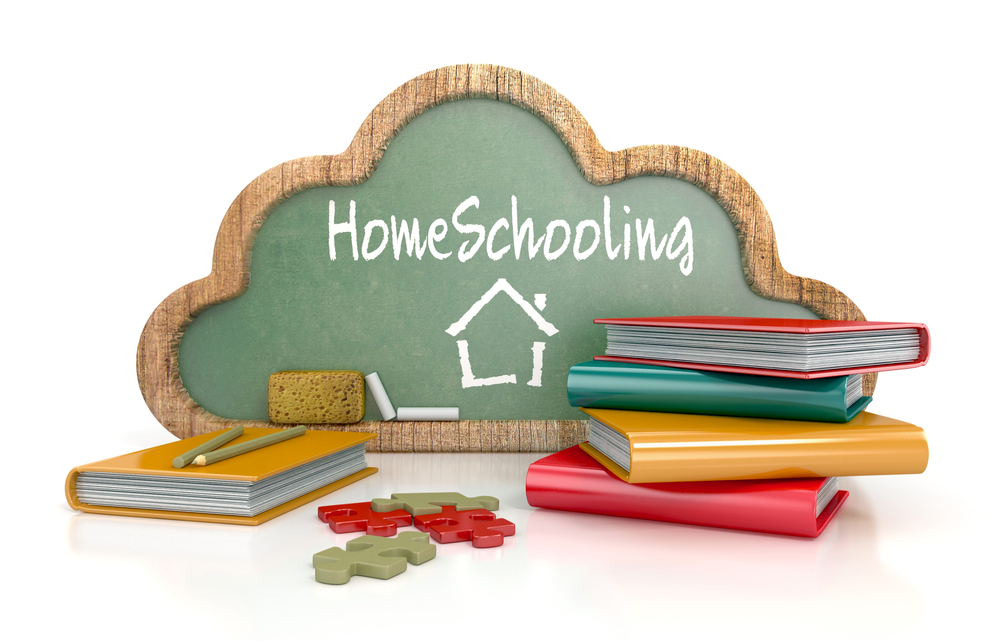Story sequencing Normal Worksheets for Ages 8-9
5 filtered results
-
From - To
Enhance your child's reading comprehension and critical thinking skills with our Story Sequencing Normal Worksheets for ages 8-9. These engaging worksheets help students practice arranging events in the correct order, fostering a deeper understanding of story structure and narrative flow. Designed specifically for early graders, our printable resources are ideal for classroom use or at-home learning. Each worksheet encourages creativity and analytical skills, making reading fun and interactive. Whether your child is honing their sequencing abilities or developing their storytelling competence, our thoughtfully crafted materials support their educational growth. Download our worksheets today and watch your child thrive in their literacy journey!


The Lion and the Mouse Worksheet


Robin Hood Folktale Worksheet


Sequence: Jack and The Beanstalk Worksheet


Jack and Beanstalk Worksheet


The Boy Who Cried Wolf Part 2 Worksheet
Story sequencing is an essential skill for children ages 8-9 as it significantly enhances their understanding of narratives and contributes to their overall literacy development. During this stage, children begin to engage with more complex texts, making it vital for them to grasp the order of events in a story. By learning to identify the beginning, middle, and end of a narrative, children can better comprehend character motivations, plot development, and themes.
Parents and teachers should care about story sequencing for several reasons. First, it helps improve reading comprehension. When children can outline the sequence of events, they are better equipped to recall important details and summarize the story effectively. This skill also fosters critical thinking, encouraging kids to analyze how events relate to one another and to predict outcomes.
Additionally, story sequencing promotes language development. As children work on organizing stories, they expand their vocabulary and improve their ability to articulate thoughts clearly. It also supports writing skills, as children learn to structure their own narratives in a coherent way. Ultimately, mastering story sequencing is foundational for academic success and effective communication, making it a critical focus area for caregivers and educators alike.

 Assign to My Students
Assign to My Students






















